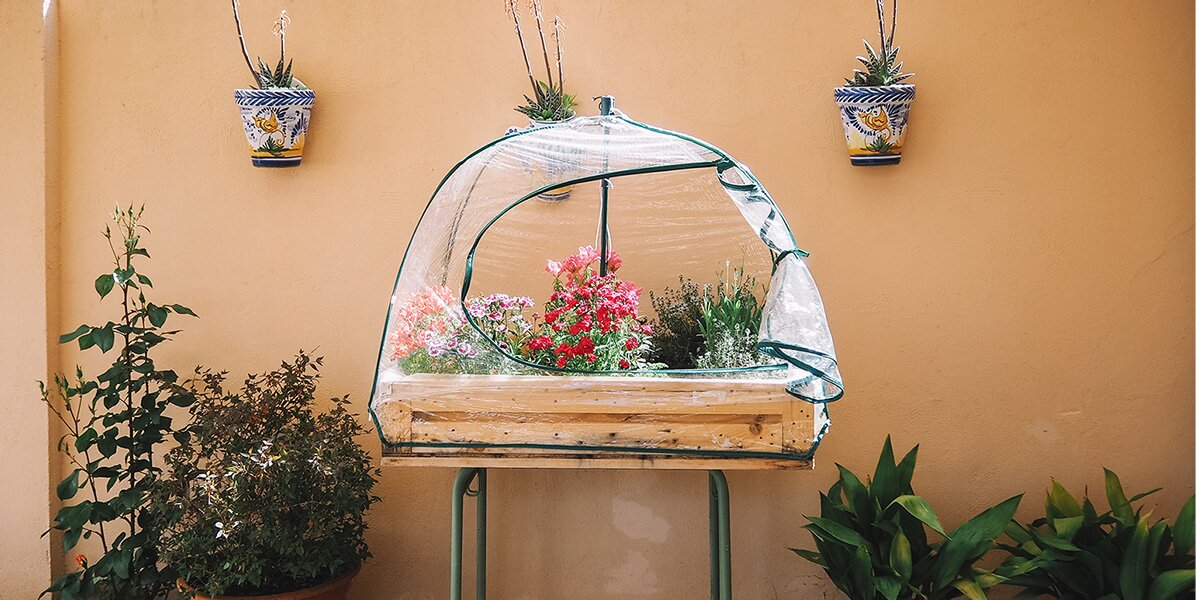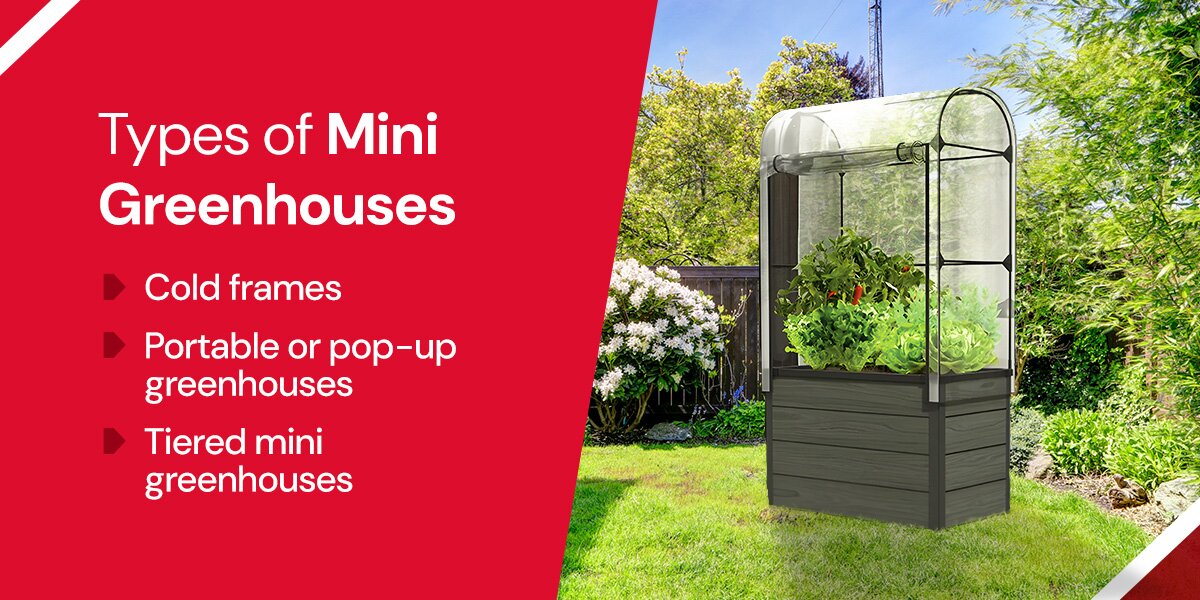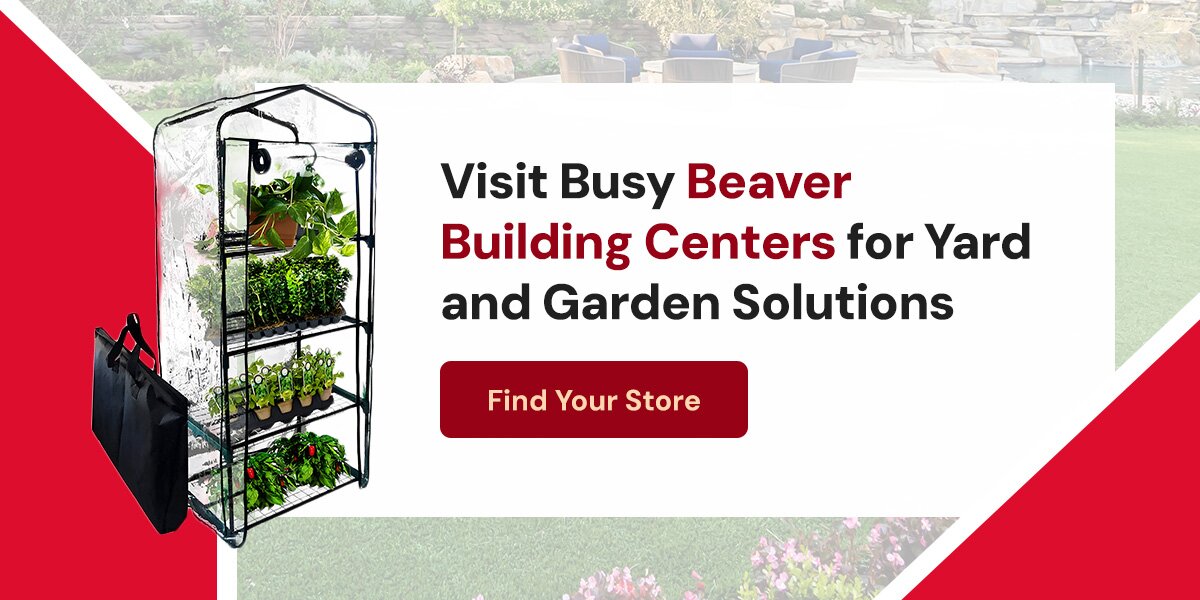
Mini Greenhouse Guide and Benefits
Do you dream of having your own plants or vegetables despite struggling with space in a small yard, balcony, or patio? Perhaps you have a spacious outdoor area and want to find effective ways to extend your growing season and create a more controlled environment for better yields. A mini greenhouse helps you achieve all those goals and offers many other advantages, too.
This informative guide takes you through the setup, use and benefits of mini greenhouses to get yours up and running, whether growing from an urban balcony or rural garden.
What Is a Mini Greenhouse?
Mini greenhouses are compact, enclosed structures that make it possible to create a more controlled environment for growing plants. Mini greenhouses are no different from regular greenhouses — the setup and processes are just on a much smaller scale. The compact nature of mini greenhouses makes them ideal for balconies and small yards.
Mini greenhouses have several distinct features:
- Simple design and construction that requires minimal assembly, especially compared to regular greenhouses.
- Affordability that makes mini greenhouses more accessible.
- Lightweight materials like PVC, plastic and aluminum frames make setup user-friendly and allow for a more portable greenhouse solution.
Is a Greenhouse Worth It?
Mini greenhouses offer several benefits, even over traditional gardening, which make them fully worth the investment:
- Protection from adverse weather: Adverse weather can greatly affect plants. Some are highly sensitive to harsh sun, prolonged shade or excessive rain and will not thrive in these conditions. A mini greenhouse shields your plants from adverse weather. It also takes this protection a step further by offering a greater level of environmental control. Using appropriate climate control accessories is an effective way to achieve these benefits.
- Improved plant health and yield: Certain environmental conditions can increase the risk of plant diseases and pests. A mini greenhouse can reduce or eliminate these conditions to protect plants and keep them healthier. Some plant diseases and pests thrive in conditions like warmth, humidity and low ventilation, and controlling these factors in your greenhouse can reduce these concerns. The mini greenhouse also provides a physical barrier from larger insects and rodents.
- Extended growing season: Mini greenhouses can extend the growing season since your plants are in an ideal environment, and you can better control factors like light and temperature levels for your plants. Being sheltered from inclement weather, like frost and heavy rains, and better protected from pests and diseases can help plants establish strong roots and thrive for longer. Protection from weather like early frost also allows you to plant sooner and yield results for longer throughout the harvesting season.
Types of Mini Greenhouses

Mini greenhouses are available in various styles, including:
- Cold frames: These greenhouses are box-like structures with low profiles and transparent lids. The simple design makes cold frames ideal for protecting plants from early frost and for protecting seedlings while they harden.
- Portable or pop-up greenhouses: Pop-up mini greenhouses typically have a lightweight spring-steel frame. This design makes it easy to set up and take down so that you can use your greenhouse temporarily as needed or move it around as frequently as you like. They make good mini greenhouses for beginners, thanks to their easy set up.
- Tiered mini greenhouses: Tiered or shelved mini greenhouses usually have a simple frame covered with plastic or PVC, which houses multiple shelves to optimize space. If you want a greenhouse for beginners, they are a versatile and affordable option.
Mini Greenhouse Set-Ups
Assess where you can place the greenhouse to optimize the right amount of sunlight and wind protection. Cold frames often come pre-assembled. For those that are not, the assembly usually involves attaching the sides and the lid.
A pop-up mini greenhouse should automatically spring into shape for its assembly. You may need to guide the frame into a good position, but apart from this, the set up is as straightforward as it gets. The most important part is to secure your structure, as pop-ups are quite lightweight. You may use weights to secure it, especially on a balcony, or use stakes to drive it into the ground in the greenhouse.
Follow the manufacturer's instructions to assemble the frame, connect the poles and attach the shelves for tiered greenhouses. Once you have assembled the frame and shelves, drape the PVC or plastic covering over the frame and secure it using the ties or zippers.
How to Use a Mini Greenhouse
Using a mini greenhouse can simplify planting, and you can still follow the same best practices as you would for any kind of gardening.
Continue to care for your plants as you usually would by watering them, pruning them and using the same pest control methods you are already comfortable with. Learning how to optimize the added element of climate control may take a bit more time, but these simple tips for beginners throughout different seasons can make the process easy:
- Spring: Focus on optimizing the milder weather for early growth. You want to place your mini greenhouse in an area that will ensure adequate sunlight. If this is not possible, consider supplementing with artificial growing lights. Open the vents more during the day as the weather warms heading into summer. Close the vents at night, especially if there is a risk of frost.
- Summer: In summer, balancing long hours of light with adequate ventilation and shade becomes key. Use shade cloth over your greenhouse or move the greenhouse into a shadier spot if possible. Water the soil more frequently to prevent it from drying out.
- Fall: You can extend the growing season in fall by using your mini greenhouse to protect your plants from frost. Reduce ventilation during the day and keep the greenhouse shut after plants receive afternoon sun to keep as much warmth in as possible throughout the night. You may also consider using bubble wrap or blankets for added warmth. You can water plants less frequently now, too.
- Winter: To keep plants hardy during winter, water sparingly and maximize insulation for warmth. You may even add an appropriate heater and thermostat to your set up. Consider using artificial lights to help your plants during the shorter days. You will start to want to ventilate the greenhouse, especially on sunny days, to prevent condensation and minimize the risk of common diseases in your plants.
Visit Busy Beaver Building Centers for Yard and Garden Solutions
A mini greenhouse allows you to enjoy early growth, an extended growing season and a more controlled environment in which your plants can thrive. If you need help finding the best products and tools for your lawn and garden needs, the Busy Beaver Building Centers team can help.
We are a home improvement center with an extensive collection of big-box inventory at affordable prices. We stock various lawn and garden products, including a quality Composite Mini Green House. We have what you need to bring your own backyard greenhouse ideas to life.
We have stores across Pennsylvania, Ohio and West Virginia. You can shop Busy Beaver Building Centers online for your mini greenhouse and other lawn and garden essentials, and enjoy in-store or curbside pickup options.

